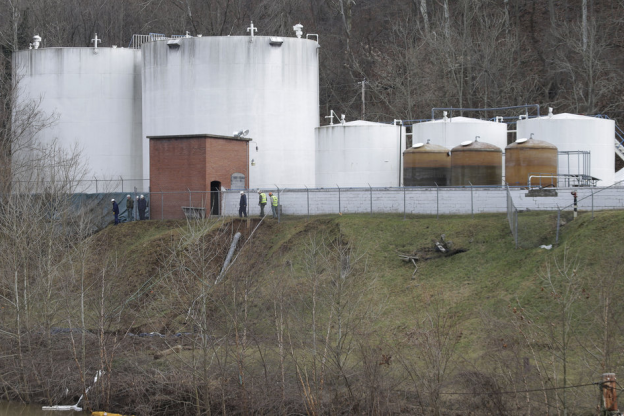

The DNR’s cold comfort
Here’s the lede from a Charlie Pierce post Friday, January 31st.
It has been amusing to watch the local politicians and government officials in West Virginia try to comfort their constituents, while simultaneously keeping faith with the corporations to whom they have been whoring out the state for two centuries, including the hilariously named — and now conveniently bankrupt — Freedom Industries, which poisoned all the water in the state.
And as Pierce points out, people as far downriver as Cincinatti (on the Ohio River which is, of course, a tributary to the Mississippi) are leery of taking showers because of the risk of aerosolized formaldehyde, a known cancer risk.
“State officials” say, Not to worry! Drink the water; it’s fine! But not everyone thinks so.
State officials in West Virginia say that in most areas, they can no longer detect any of the industrial chemical MCHM that spilled into the water supply recently. They say the water is safe for people to drink and use — including most [most?] pregnant women. But other public health specialists say they don’t trust these assurances.
“I think there’s no way to know what the safe levels of the chemicals are at this point,” says Dr. Rahul Gupta, director of the state’s largest public health department. He’s in charge of protecting 250,000 people whose water was affected by the spill.
No matter what federal and state officials say, Gupta says his own family doesn’t trust the water supply. The water in his home still has a chemical smell like licorice, he says.
He and his wife, who is also a physician, have two teenage sons.
“They have decided not to drink the water at this time,” Gupta says. “I have personally tried to drink the water. The smell just … prevents me from drinking the water, unfortunately.”
It’s safe, just repellant! Hold your noses and drink it, people, because, well, freedom!
The chemical spilled by Freedom [!] Industries apparently breaks down into, including, formaldehyde. And guess what, formaldehyde has been in found in drinking water samples. “State officials” say, Nah, couldn’t be! It must be from something else!
You really cannot make this up. But this is the state of regulatory America. But at least we’re free! Free, that is, to go out and buy our own drinking water. Many — many — years ago, when I was fresh-faced student in college, a professor described air and water as “free goods.” I wonder if they do that anymore?
And I don’t know about you, friends, but this surely reminds me of the last week’s events in Minnesota, too. It is pure, plain, and simple, a cautionary tale, if we only but pay attention to it.
It was recently reported that the “water model” on which the entire PolyMet SEIS is based, and on which we are are to figure out what is likely to happen in the next 200 to 500 years, is based on data from a single, dry year. Not only that, but the data from that year is junk, or we suspect that it is.
But we were told, Hey, it’s all good! Not to worry! Trust us!
Trust the regulators! was a theme echoed by the slavering herd of pro-mining pols at the DNR’s comment meeting at the RiverCentre (a loathsome word, but that’s for another day) on January 28th.
At that meeting, a representative of the DNR complained to me that I was being direct, confrontational, and personal with my comments about DNR personnel’s — specifically Steve Colvin — response to criticism of the water model.
All true. I have no personal beef with Mr. Colvin. But his dismissive attitude about obvious defects in the foundational model of the SEIS ought to call him in for criticism from some quarter, anyway. He’s the project manager of the whole kit and kaboodle, not just some laborer in the vineyard at the DNR.
And just imagine it, a few years from now, the PolyMet mine and plant are humming along, and traces of mercury or other heavy metals are found in river samples, or the pH of the Embarrass or the Partridge Rivers changes. What’s the response from PolyMet and the DNR and the Minnesota Pollution Control Agency?
Of course, there will be a joint news conference to announce the closure of the mine until the problem is rectified, and permanently if it can’t be.
Do you doubt that? Well, so do I.
Just like West Virginia’s formaldehyde, the mining company’s game will be to blame it on somebody else.
And with a bunch of regulators who smile with approval at a water model that would come in dead last at a junior high science fair, it’ll probably work.
Thanks for your feedback. If we like what you have to say, it may appear in a future post of reader reactions.

